

Pierre-Alexandre Wille (19 July 1748, in Paris - 1837, in Paris) [1] was a French genre painter.


Pierre-Alexandre Wille (19 July 1748, in Paris - 1837, in Paris) [1] was a French genre painter.
Son of the engraver, Johann Georg Wille, he received his first lessons in art at his father's studio. From 1761 to 1763, he studied with Jean-Baptiste Greuze, then with Joseph-Marie Vien. Relying on his father's influence to promote his career, he became a member of the Académie Royale de Peinture et de Sculpture in 1774, but never became an Academician. The following year, he married Claude-Paule Abau. He exhibited at most of the Salons from 1775 to 1787. For a time, he served as a court painter to King Louis XVI. Some of his paintings were engraved by his father.
During the French Revolution, he served with the Garde Nationale, but was ruined financially. He continued to paint, although his work had become hopelessly out of fashion. He held his last exhibit (a few watercolors) at the Salon in 1819. [1]
In 1821, after recurring bouts of illness over twelve years, Claude-Paule went mad and was committed to the asylum at Charenton. In order to pay the cost of her stay there, he had to appeal for charity from Duchess Marie Thérèse. Nothing more was heard from him, and it was long assumed that he died shortly after; possibly also in a hospital. More recently, the British writer, Colin Clark, son of the art historian, Kenneth Clark, was able to establish that he had died in poverty in 1837, at the age of eighty-eight. [1]
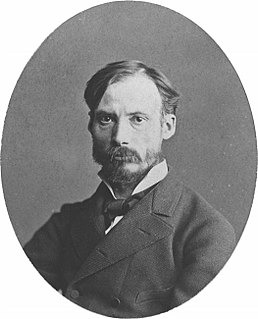
Pierre-Auguste Renoir was a French artist who was a leading painter in the development of the Impressionist style. As a celebrator of beauty and especially feminine sensuality, it has been said that "Renoir is the final representative of a tradition which runs directly from Rubens to Watteau."

Ary Scheffer was a Dutch-French Romantic painter. He was known mostly for his works based on literature, with paintings based on the works of Dante, Goethe, and Lord Byron, as well as religious subjects. He was also a prolific painter of portraits of famous and influential people in his lifetime. Politically, Scheffer had strong ties to King Louis Philippe I, having been employed as a teacher of the latter's children, which allowed him to live a life of luxury for many years until the French Revolution of 1848.

Achille Jacques-Jean-Marie Devéria was a French painter and lithographer known for his portraits of famous writers and artists. His younger brother was the Romantic painter Eugène Devéria, and two of his six children were Théodule Devéria and Gabriel Devéria.

Jean Pierre Alexandre Antigna was a French painter.
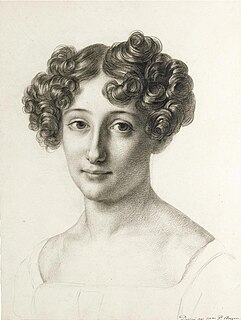
Pauline Auzou was a French painter and art instructor, who exhibited at the Paris Salon and was commissioned to make paintings of Napoleon and his wife Marie Louise, Duchess of Parma.

Marie Alexandre Lenoir was a French archaeologist. Self-taught, he devoted himself to saving France's historic monuments, sculptures and tombs from the ravages of the French Revolution, notably those of Saint-Denis and Sainte-Geneviève.

Pierre Henri Révoil was a French painter in the troubadour style.
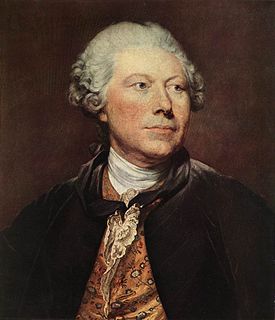
Johann Georg Wille, or Jean Georges Wille was a German-born copper engraver, who spent most of his life in France. He also worked as an art dealer.

Marguerite Gérard was a successful French painter and print-maker working in the Rococo style. She was the daughter of Marie Gilette and perfumer Claude Gérard. At eight years old she became the sister-in-law of Jean-Honoré Fragonard, and when she was 14, she went to live with him. She was also the aunt of the artist Alexandre-Évariste Fragonard. Gérard became Fragonard's pupil in the mid-1770s and studied painting, drawing and printmaking under his tutelage. Gérard and Fragonard created nine etchings in 1778. Historians currently believe Gérard was the sole artist of five of these etchings since many have a duplicate created by her tutor Fragonard. More than 300 genre paintings, 80 portraits, and several miniatures have been documented to Gérard. One of her paintings, The Clemency of Napoleon, was purchased by Napoleon in 1808.

Constance Marie Charpentier was a French painter. She specialized in genre scenes and portraits, mainly of children and women. She was also known as Constance Marie Blondelu.

Louis-Marie Autissier, was a French-born Belgian portrait miniature painter. According to Marjorie E. Wieseman, curator of European painting, at the Cincinnati Art Museum, "Autissier's success as a miniaturist was in large measure due to his talent as a colourist and his meticulous detailing of costumes and accessory." He is considered the founder of the Belgian school of miniature painting in the nineteenth century. Among his most accomplished pupils and followers were Alexandre Delatour (1780—1858), Louis Henry Fontenay (1800—1852), and Dominique Ducaju (1802—1867). His works are in the collections of the Cincinnati Art Museum, the Nationalmuseum and the Royal Collection.

Hendrik Scheffer was a Dutch painter in the Romantic tradition who lived in France for most of his life. In France he is usually known as Henri Scheffer.

Adolphe-Félix Cals was a French portrait, genre, and landscape painter.

Pierre-Alfred Dedreux, who signed his works as Alfred de Dreux was a French portrait and animal painter, best known for his scenes with horses.
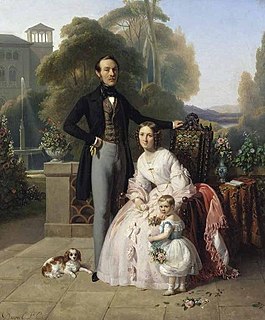
Pierre Duval Le Camus, known as Camus le père was a French painter and lithographer who specialized in portraits and genre scenes. His son, Jules-Alexandre Duval Le Camus, also became a well-known artist.

Pierre-Simon-Benjamin Duvivier was a French engraver of coins and medals.
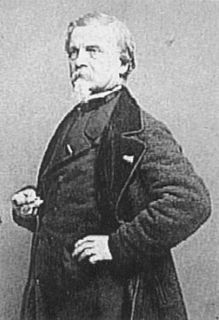
Claude Jacquand, known as Claudius was a French painter of historical tableaus, genre scenes and religious subjects.

Jean-Pierre Granger was a French painter who worked in the Neo-Classical style. He is primarily known for portraits, history paintings and mythological scenes, but also created numerous religious works. Some sources incorrectly call him Jean-Perrin.

Auguste-Xavier Leprince was a French artist and painter who attained celebrity at the age of seventeen. His patrons included the Duchesse de Berry, Charles X, and Alexandre du Sommerard. He was also a teacher; in his twenties he established his own atelier in Paris, with pupils including his two younger brothers, Robert-Léopold and Pierre-Gustave, as well as Eugène Lepoittevin and Nicolas Alexandre Barbier. His meteoric career came to an abrupt end and his "brilliant promise was cut short by his premature death at the age of twenty-seven."
![]() Media related to Pierre-Alexandre Wille at Wikimedia Commons
Media related to Pierre-Alexandre Wille at Wikimedia Commons